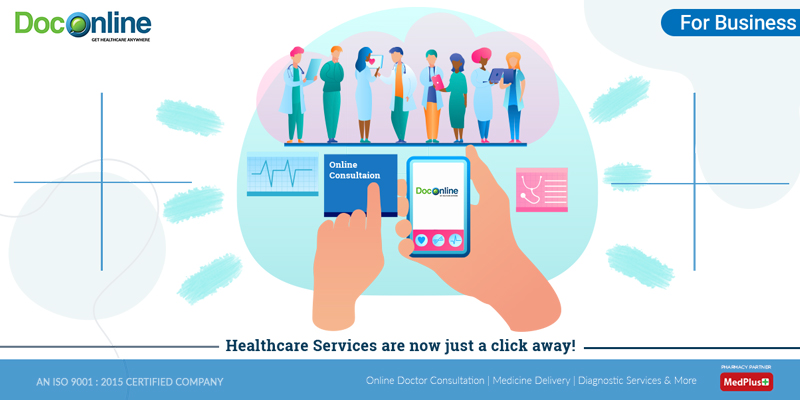Understanding the Cost-Effectiveness of Subscription-Based Healthcare Designs
As the health care landscape advances, subscription-based versions arise as a compelling option, assuring to redefine exactly how individuals take care of clinical costs. Examining these designs' cost-effectiveness necessitates a nuanced contrast with standard insurance, thinking about both monetary implications and client satisfaction.
Overview of Subscription-Based Versions
Subscription-based health care designs, often referred to as direct medical care or attendant medication, are progressively obtaining attention as a possible service to inadequacies within typical health care systems. These models run on the principle of offering clients direct accessibility to healthcare service providers with a monthly or yearly charge, bypassing the demand for conventional insurance systems. This setup intends to improve patient-provider communications by decreasing management burdens, which typically impede prompt and customized care.
At the core of subscription-based versions is the focus on a more customized person experience. Clients take advantage of improved access to their doctors, usually including same-day or next-day consultations, extended assessment times, and straight interaction networks such as phone or video clip calls. This version fosters a proactive strategy to medical care, where companies and people can collaboratively concentrate on preventative care and chronic illness monitoring.

Expense Contrast With Typical Insurance Policy

One of the main economic advantages of subscription versions is transparency in prices. Alternatively, typical insurance might be extra advantageous for people needing specialized treatment or costly treatments not covered under a registration version, as they benefit from the more comprehensive protection network and cost-sharing devices.
Nevertheless, cost-effectiveness is context-dependent. While registration versions could supply financial savings for those mostly needing medical care, individuals with persistent conditions or specialized healthcare needs may find traditional insurance a lot more thorough. Examining specific health care needs and potential usage is critical in determining the most cost-effective choice for individuals.
Influence On Client Complete Satisfaction
Patient contentment within subscription-based healthcare versions frequently mirrors a substantial renovation over standard insurance policy systems. This improvement is mainly credited to the individualized treatment and access these models use. People often report greater complete satisfaction because of reduced delay times and the convenience of scheduling consultations. Unlike conventional systems, where patients might experience delays in obtaining care, subscription-based designs make certain even more prompt and direct interactions with doctor.
Furthermore, the openness in prices related to subscription-based medical care alleviates the usual disappointments associated with unforeseen fees and intricate payment procedures seen in typical insurance coverage (subscription based basics healthcare). People value recognizing the precise financial dedication upfront, leading to increased trust fund and self-confidence in their health care management
Furthermore, the emphasis on preventive treatment and health in subscription models adds to boosted health and wellness outcomes, additionally enhancing patient contentment. By concentrating on recurring health care instead of anecdotal care, patients experience an even more constant and holistic healthcare trip.
Furthermore, the improved provider-patient partnership fostered in these models, identified by even more time spent per individual and customized focus, plays a critical role in raising client satisfaction degrees, as clients really feel genuinely taken care of and recognized.
Carrier Experiences and viewpoints
From the company's viewpoint, subscription-based healthcare models offer a transformative strategy to delivering clinical services. These designs stress a preventative and positive health care strategy, permitting service providers to concentrate on comprehensive client care without the constraints of traditional fee-for-service arrangements (subscription based healthcare). This shift in emphasis frequently results in improved patient end results and boosted company contentment, as medical care specialists can allocate more time and sources to individual engagement and individualized treatment plans
Furthermore, subscription versions assist in foreseeable profits streams, which improve monetary security for doctor. This predictability enables enhanced source planning and allocation, adding to a more effective medical care delivery system. Suppliers can invest in team infrastructure, training, and innovation improvements, thus improving the top quality of care provided.
However, the change to subscription-based versions is not without difficulties. In spite of these hurdles, numerous providers discover that the benefits of increased individual communication and streamlined procedures exceed the initial challenges, making subscription-based designs an eye-catching choice.
Future Leads and Difficulties

A primary obstacle is governing conformity, as registration models have to abide by evolving healthcare policies and insurance demands. This necessitates constant adjustment and innovation to make sure alignment with lawful standards. Additionally, integrating these designs into existing health care infrastructures can be intricate, needing substantial investments in modern technology and training.
There is likewise the possible risk of creating inequities in healthcare access, as registration find this designs might favor those who can try this site afford them, leaving susceptible populaces underserved. Addressing this calls for thoughtful consideration of rates strategies and aid mechanisms to guarantee inclusivity.
Conclusion
Subscription-based healthcare models provide a sensible alternative to conventional insurance policy by supplying economic predictability and transparency, especially benefiting individuals with chronic conditions or regular medical care needs. The cost-effectiveness of these versions rests upon private medical care usage patterns and situations. While they might enhance individual contentment and improve budgeting, obstacles stay in addressing specialized care requirements. Future considerations consist of balancing detailed protection with cost and integrating these versions within the broader healthcare system for optimum results.
Subscription-based medical care designs, in some cases referred to as straight primary treatment or attendant medication, are significantly getting interest as a prospective solution to inadequacies within standard medical care systems. Unlike conventional systems, where people could experience delays in receiving treatment, subscription-based versions ensure more timely and straight interactions with health care carriers.
These designs stress a proactive and preventative health care approach, enabling providers to focus on thorough individual treatment without the restrictions of traditional fee-for-service plans. As these designs proceed to gain grip, they use the potential to change client accessibility to care, enhance service distribution, and enhance health care spending.Subscription-based healthcare versions provide a practical alternative to typical insurance policy by supplying economic predictability and openness, specifically benefiting people with chronic problems or constant healthcare requirements.